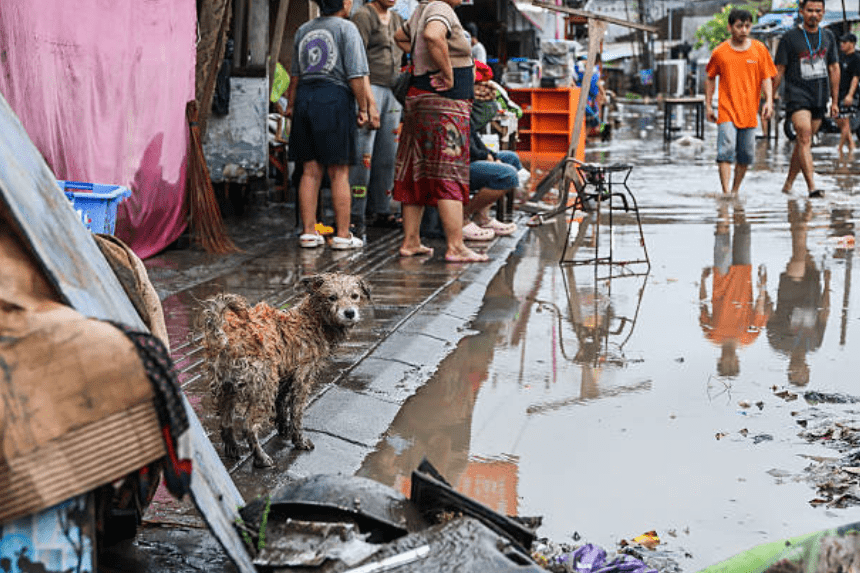At least 14 people have died as a result of severe flooding throughout Bali, the biggest flood disaster to hit the island in more than ten years. Rivers overflowed and flooded entire communities due to torrential rainfall, forcing evacuations and a declaration of emergency. Rescue crews are still looking for survivors in severely affected places like Denpasar and Gianyar, even though the downpour has stopped and the water levels are dropping.
Due to landslides, damaged roads, and debris-blocked pathways, emergency personnel are having trouble getting to the area. Numerous people have been hurt or displaced, and two people are still unaccounted for. In order to provide immediate assistance and repair essential infrastructure, the provincial administration is working with national disaster authorities.
Which regions are most impacted?
The capital of Bali, Denpasar, has recorded the most deaths, with eight confirmed dead. There have been three recorded deaths in Gianyar, one in Badung, and two more in Jembrana Regency. At least one person died from electrocution in the latter, where victims were carried away by powerful currents.
In Jembrana, at least 85 people were sent to emergency shelters. Two buildings in Denpasar fell as a result of water damage, while mud and landslides continue to impede several routes. Here is the link to our article on Texas Flood Alerts.
How are the authorities reacting?
President Prabowo Subianto has sent condolence messages and instructed all pertinent authorities to take immediate action. Bali’s government has imposed a state of emergency that will last for one week. Although progress is being slowed by challenging terrain and weather, search and rescue operations are still in process.
Long-standing worries about the waste management infrastructure on the island have been raised by local officials, who claim that trash-clogged drainage systems made the Bali flash floods worse. Outdated systems were overloaded by significant rains, particularly in areas with a high tourist population.
Why did the flooding occur?
In 24 hours, more than 385 mm of rain fell, which is much more than the seasonal normal. Both urban and rural areas experienced landslides and flash floods as a result of the rain. Weather alerts are still in place because dangerous circumstances may still exist even though the rains are predicted to stop.
According to experts, the Indonesian archipelago is experiencing more frequent and severe natural disasters as a result of climate change. The monsoon season is becoming more dangerous due to rising sea levels and more intense rainfall patterns. Here is the link to our article on Deadly Flash Floods.
Are neighboring provinces impacted?
Indeed, reports of devastation have also come from the nearby province of East Nusa Tenggara. Similar flash floods resulted in at least three fatalities, four reported missing, and two injuries. For any secondary effects, the Indonesian National Disaster Management Authority is keeping an eye on certain areas.
Bali’s tourist destinations have also been hit hard. Businesses and hotels are coping with power outages, water damage, and cancellations. There are travel advisories in effect, and tourists are advised to keep an eye out for local notices.
Final Thoughts
The devastating flash floods in Bali serve as a reminder of the area’s increasing susceptibility to climate change. In addition to emergency action, long-term infrastructure and environmental resilience must be prioritized as Bali recovers from the destruction. Reducing the impact of future disasters will require strengthening drainage systems, better weather forecasts, and improving waste management.








